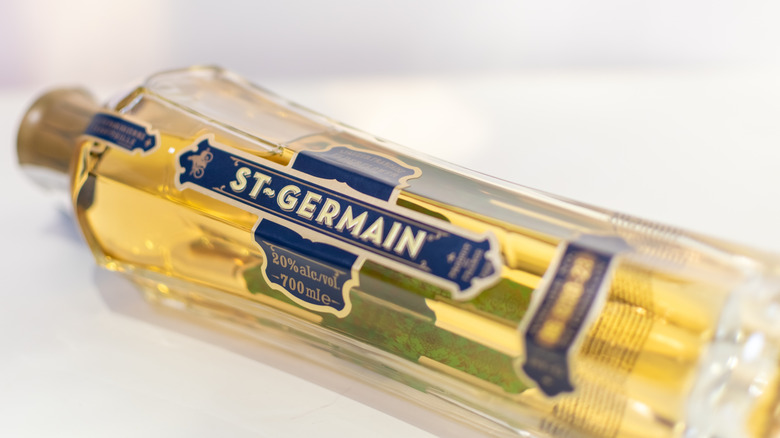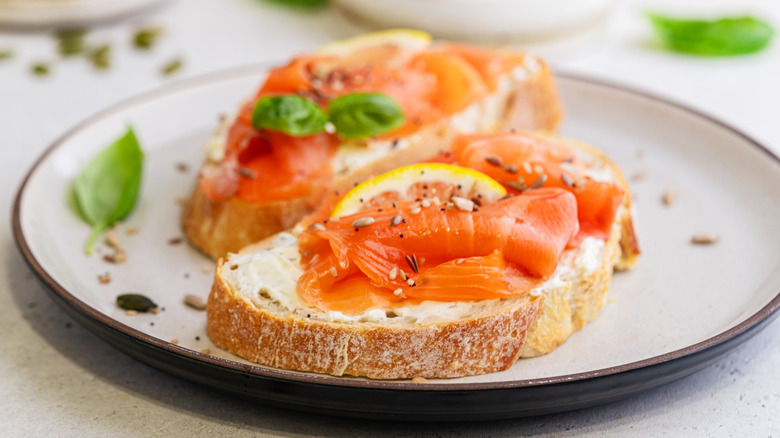Give Mimosas A Summertime Upgrade With This Floral French Liqueur
If you're already a fan of mimosas (AKA, the two-ingredient cocktail you should have memorized by now), it won't take much to convince you that they're perfect for brunch. But I'm always on the lookout for ways to take something that's good and make it even better. So, while champagne is already a fancy accompaniment to orange juice, you can elevate this citrusy classic by replacing the bubbly with St. Germain — or even serving the liqueur alongside it. Made from handpicked elderflowers harvested across Europe, this liqueur brings a delicate floral sweetness that works beautifully with orange juice and sparkling wine. The flavor is subtle and elegant, offering notes of pear, peach, and grapefruit without veering into syrupy territory.
This makes it ideal for warm-weather sipping. It's easy to make a mimosa too sweet or too acidic, depending on the juice and champagne you use, but St. Germain bridges that gap with just a touch of sweetness. The drink will still feel brunch-appropriate, but it'll also lend itself to garden parties, bridal showers, or just a lazy Sunday on the porch. You can also experiment with different citrus juices (like blood orange or grapefruit) while still letting that floral note shine. Adding St. Germain to a mimosa is a vibe that you don't want to miss, and it's super easy to swap in.
How to elevate your mimosa with St. Germain
You can play around with your mimosa recipe in a lot of different ways, but you don't want to stray too far from the original cocktail. I think it's safe to say that St. Germain extends the range of flavors that the typical mimosa highlights, especially the tangy brightness of the orange juice. But florals alter the drink's character, giving it an aromatic layer.
For a sunset version, try mixing a bit of bubbly prosecco or Champagne with a splash of St. Germain and a little blood orange or tangerine juice. Garnish it with an edible flower or citrus twist, and suddenly you've got a light summer aperitif on your hands that looks incredible — and tastes even better.
You can also experiment with proportions; if you cut back slightly on the juice and let St. Germain take center stage, the drink becomes lighter and more refined. That versatility means you can adapt the base mimosa template to fit the occasion, whether you're dressed in linen at a garden party or unwinding on the deck after a long day.
What to pair with your St. Germain mimosa
Since this is a particularly delicate profile, it's smart to know which foods go well with St. Germain, so you can enhance the flavors. When serving the floral liqueur in a mimosa, shoot for brunch dishes that are citrusy, herbaceous, or buttery; like lemony ricotta pancakes, a two-ingredient smoked salmon spread on toast with dill, or a simple arugula salad with goat cheese and grapefruit.
St. Germain also pairs beautifully with soft cheeses or mild herbs. A croissant sandwich with brie and fig jam works well, as does quiche with leeks or tarragon. If you're serving fruit, opt for berries or stone fruit — like apricots and plums — because their tartness helps balance the mimosa's sweetness without overshadowing the elderflower.
St. Germain also levels up desserts, so if your brunch ends on a sweet note, consider lavender shortbread, lemon curd tartlets, or even vanilla panna cotta. These light, subtly flavored desserts keep things cohesive and allow for a lot of creativity with your brunch menu. And who wouldn't want to cheers to that?


